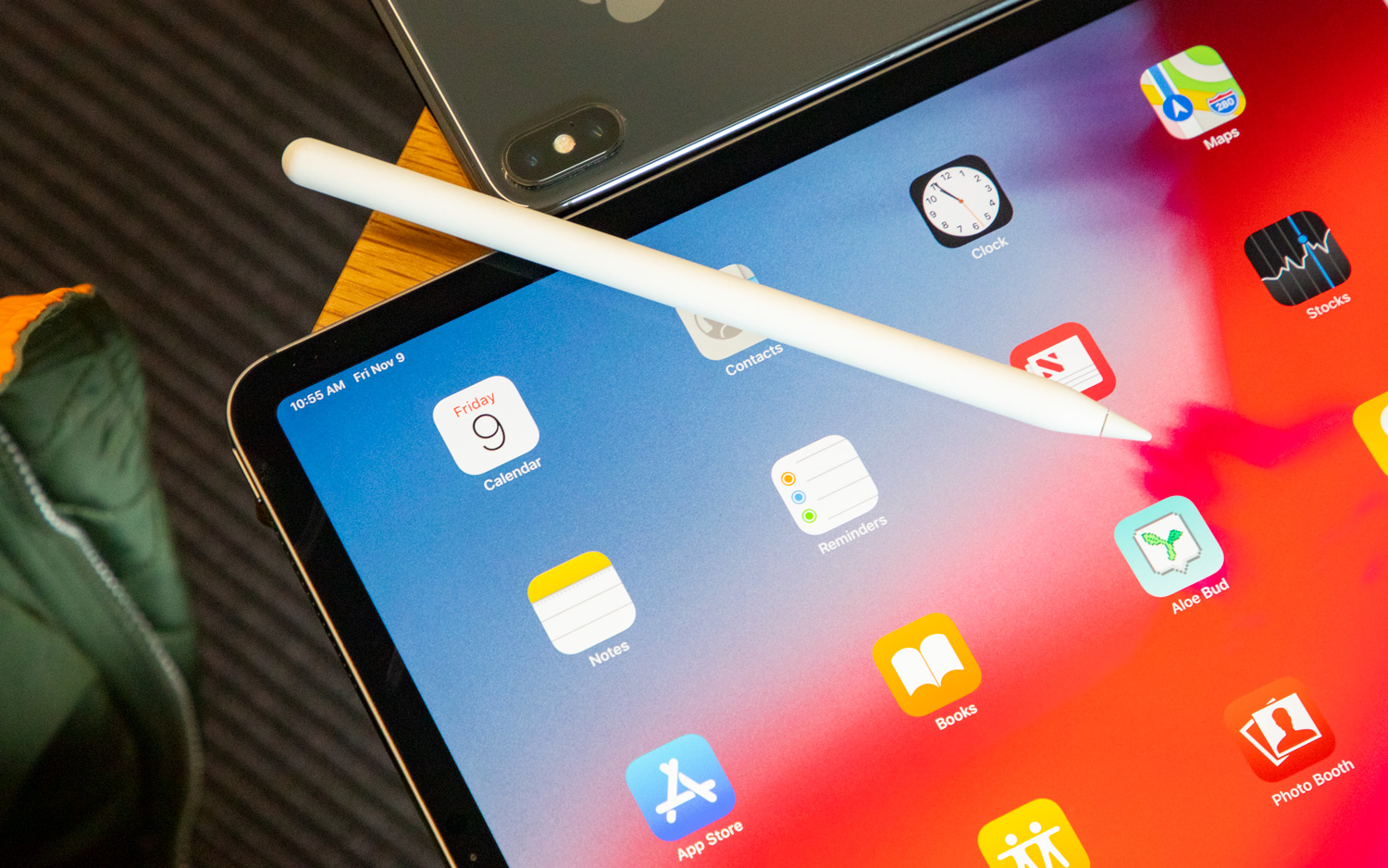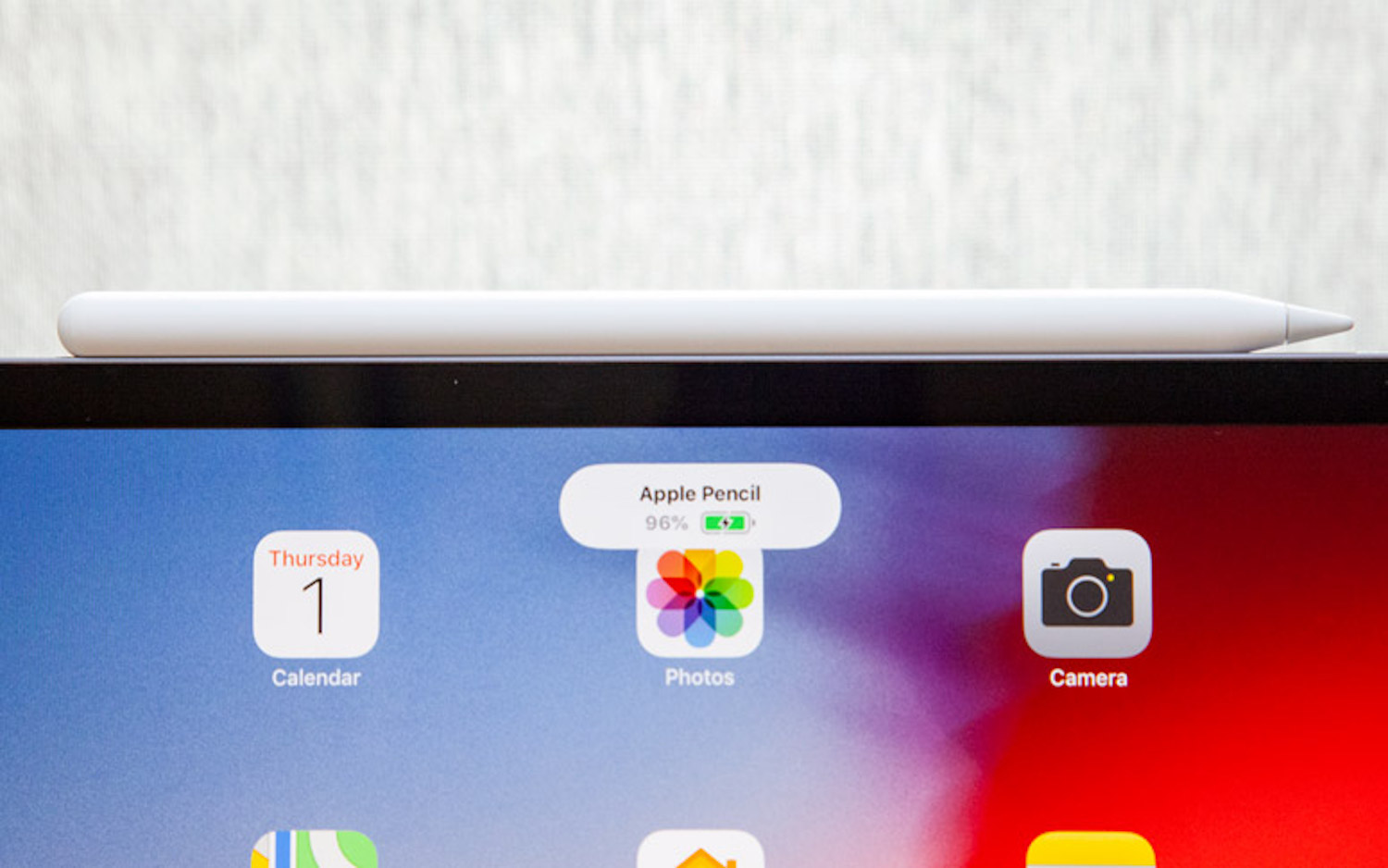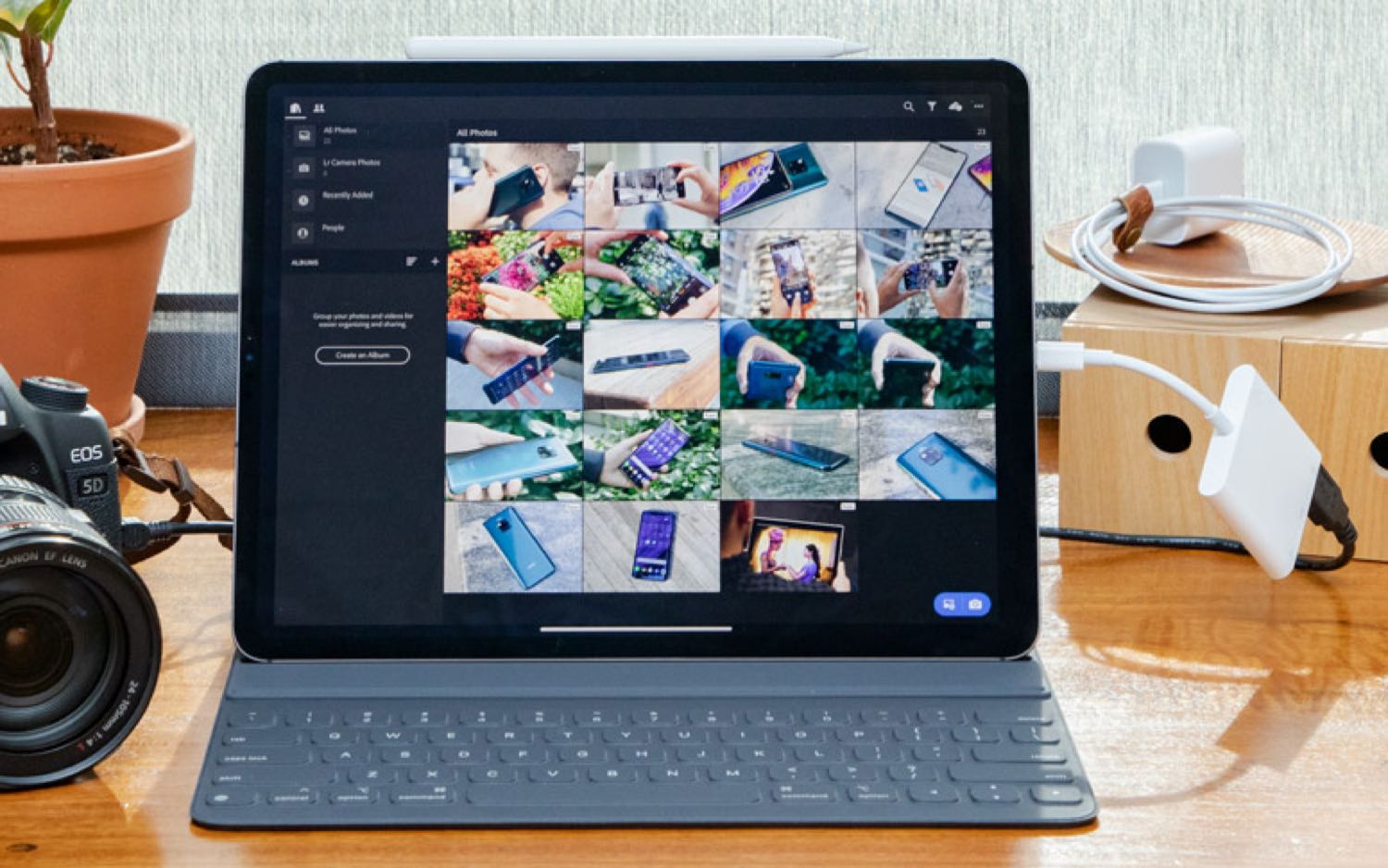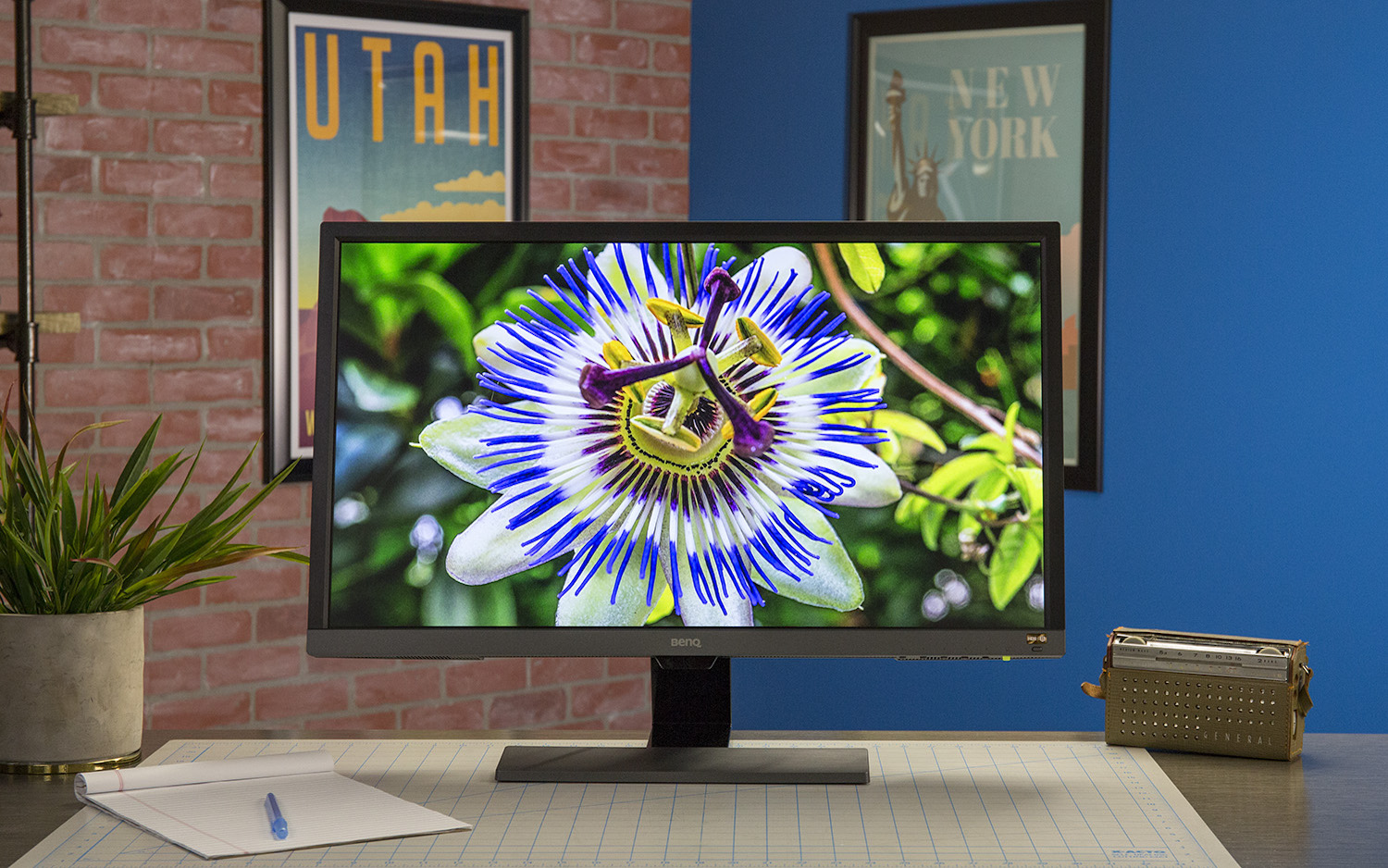4 iPad Features That Apple Should Bring to the iPhone
Maybe future iPhones could learn a few things from the latest iPad Pro. Here are some iPad features we'd like to see on Apple's smartphones.
Most of the time, the iPhone stands at center stage in the iOS world. But every now and then, the iPad gets a moment. With this week's release of new iPad Pro models, people are talking about Apple's tablet and its laptop-equivalent power and price. The debate about whether the iPad can ever truly serve as a replacement for a conventional PC rages on.

But let's take a break from all that talk about iPads and PCs and instead ponder a different question: What is Apple doing on the iPad that could, one day, benefit the iPhone?
The new iPad Pro inherits numerous features from the iPhone X family of devices, including Face ID, shrunken-down bezels for an edge-to-edge look, a Liquid Retina display reminiscent of the iPhone XR's screen, a version of the A12 processor and the absence of a headphone jack. But it's also not hard to imagine the iPad leading its smaller iOS cousin in a few new product directions.
Magnets and a Bowling Pencil
The obvious one — and it's a feature that Apple has steadfastly refused to add to the iPhone — is support for the Apple Pencil. The latest iPad Pro models support a new, second-generation Pencil that magnetically attaches to the iPad and automatically pairs and charges. It's pretty slick.

Samsung's Galaxy Note has shown that large phones with styluses have at least some appeal. Apple has already built support for quick sketching into iOS; if you touch an Apple Pencil to an iPad, the Notes app automatically opens, ready to take down whatever you want to write. It's not hard to look at a device with a screen as large as the iPhone XS Max and imagine that the phone could work just fine as a small sketchbook or notebook.
The Apple Pencil, though, is just too long to really work with a phone, even a big one like the XS Max. If Apple would even consider adding Pencil support to an iPhone, the company would probably need to design a new, stubbier model, like a bowling pencil.
Apple's magnetic-charge approach with the iPad also complicates matters, because the Pencil needs the new iPad Pro's flat sides to attach and stay attached magnetically. If Apple wanted to get around this for the iPhone, the company could engineer a Bowling Pencil with an inversely curved side (rather than a flat one) so that the accessory can snap right into place on the side of an iPhone.
USB-C and expanded device support
As part of Apple's declaration that it sees the iPad Pro as more of a peer to laptop PCs, the company has made these new tablets the first iOS devices with USB ports. I think it's a great move, not because I'm a fan of adapters but because it seems to suggest that Apple will expand iOS's support for USB devices in the future.

That's good, because right now, the iPad Pro doesn't really do anything different from what you can do with other iOS devices via a Lightning-to-USB adapter. iOS doesn't support attaching a thumb drive or hard drive and viewing the files stored on that drive in the Files app, for example. It's a gaping hole, and it's frustrating.
But if Apple's going to plug that hole in an iOS update — and let's hope it does — I don't see why it shouldn't bring those features to the iPhone as well. I've been known to edit hours-long, multiperson podcasts on my iPad using Ferrite Recording Studio, and while I wouldn't choose to do so on an iPhone, because of the small screen, the handheld's sure got the power to do it.
Whether the iPhone will one day inherit USB-C is another question. I don't think it's a foregone conclusion: Apple really did design Lightning with the iPhone in mind, to make a port that's as thin and small as possible. That said, USB-C is not much thicker, and it's now the dominant port style on pretty much every other device that Apple sells.
People who have invested in Lightning peripherals and adapters will complain loudly if Apple switches ports, and you might think the potential for that reaction would give Apple pause. But when was the last time Apple flinched when it came to forcing its customers to buy new accessories, peripherals or adapters? (I'll attach my wired headphones to this dongle while you think it over.) If Apple thinks USB-C is the right move for the iPhone, the company will make that move and won't look back.
External displays and bigger apps
The one thing that you are able attach to an iPad's USB-C port that you can't attach to any other iOS device is a big, high-resolution display. The new iPad Pros will drive 5K displays via USB-C, which is pretty impressive. Of course, as the iPads have an entirely touch-based operating system, that display can only mirror your screen or serve as a preview monitor for presentation and video-editing apps and the like.

That's pretty limited. I keep thinking that there must be another shoe to drop here. I can see a few intriguing possibilities. First, Apple has said that it will design its own high-resolution stand-alone display, presumably to be released alongside the new Mac Pro in 2019. This is a wacky idea, but what if that display supported multitouch? What if you could plug an iPad Pro into the display and use it as if it were an enormous iPad? That's a huge leap, but if it happens, I'd sure like to be able to do the same thing with a future USB-C iPhone.
Another possibility is that in bringing iOS apps to the Mac next year, Apple will encourage app developers to add windowing, menu bars and keyboard shortcuts to their apps. Wouldn't it be interesting if those decisions benefited not just the Mac, but also worked on devices like the iPad Pro? You would just need to attach them to a large display with a keyboard and pointing device. And again, I say, "If the iPad can do it, why not the iPhone?"
Apple's processor game is so good that we all know these A-series processors put the power of PCs in our pockets. What if, like Samsung does with its DeX environment, Apple let you plug in any iOS device to a monitor and turn that device into a PC?
iPad inside
Here's a final idea, even more bananas than the previous one, but worth at least a moment's consideration. What if the best iPad feature Apple could add to the iPhone is the iPad itself? This week, we saw Samsung show off a masked concept device that was a smartphone that flipped open and unfolded to reveal a large screen inside.
It'll probably be years before folding-screen smartphone designs are practical and will comfortably fit in our pockets. But imagine a world where Apple can provide a pleasantly thin iPhone that, with a flip, opens up to become a small tablet. Maybe the best tablet is the one that's always with you, ready to be summoned from your pocket at a moment's notice.
Credit: Tom's Guide
Sign up to get the BEST of Tom's Guide direct to your inbox.
Get instant access to breaking news, the hottest reviews, great deals and helpful tips.
Jason Snell was lead editor of Macworld for more than a decade and still contributes a weekly column there. He's currently running the Six Colors blog, which covers all of Apple's doings, and he's the creative force behind The Incomparable, a weekly pop culture podcast and network of related shows.
